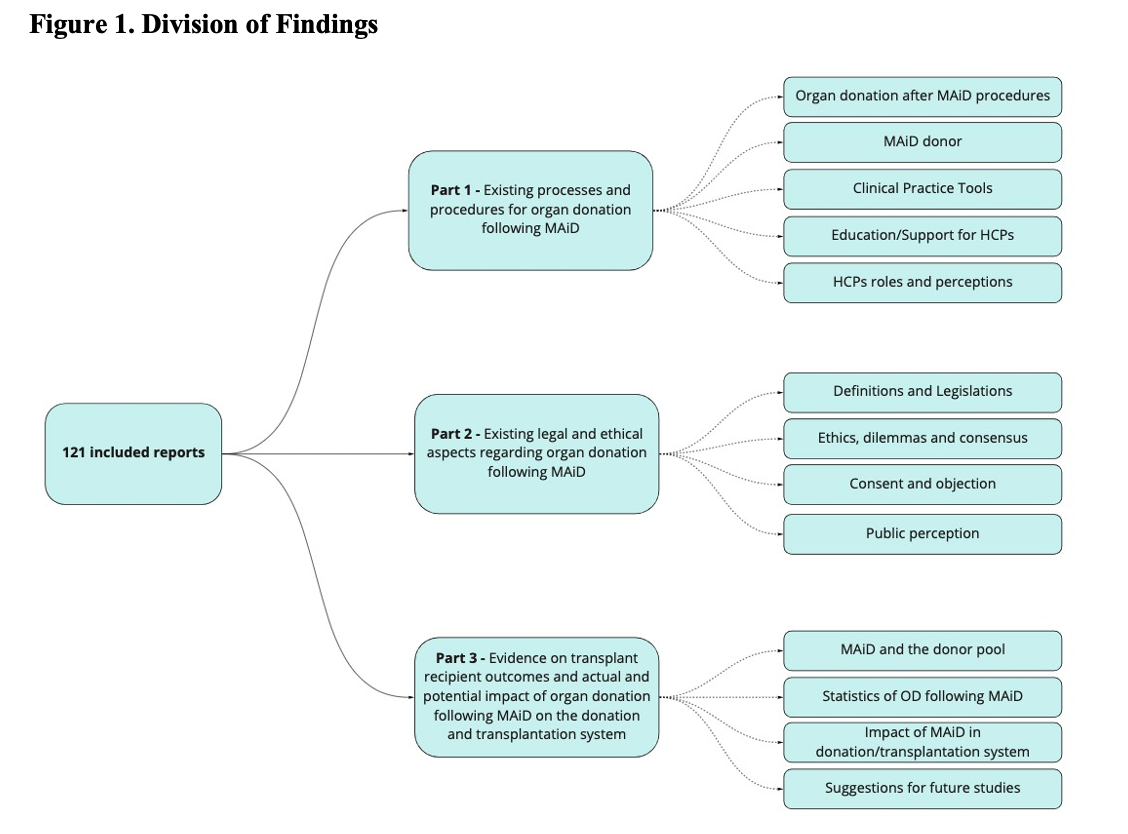Organ donation following medical assistance in dying: a scoping review
Vanessa Silva e Silva1, Amina Silva2, Andrea Rochon3, Ken Lotherington4, Laura Hornby4, Tineke Wind5, Jan Bollen5, Lindsay Wilson4, Aimee Sarti6, Sonny Dhanani7.
1Nursing , Brock University, St. Catharines, ON, Canada; 2Nursing , Queen's University, Kingston, ON, Canada; 3Nursing , St. Lawrence College, Kingston, ON, Canada; 4Organ and Tissue Donation and Transplantation, Canadian Blood Services, Ottawa, ON, Canada; 5Maastricht University Medical Center+, Maastricht, Netherlands; 6The Ottawa Hospital, Ottawa, ON, Canada; 7Research Institute, Children's Hospital of Eastern Ontario, Ottawa, ON, Canada
Introduction: Organ donation following Medical Assistance in Dying (MAiD) is a relatively new procedure when compared to the well-established practices of deceased organ donation after neurological determination of death. Currently, the only countries allowing for donation after MAiD are Canada, Netherlands, Belgium and most recently Spain. To inform changes in the practice guidelines and ensure ethically acceptable procedures, we examined the international literature on the existing processes, outcomes and ethical debates regarding organ donation following MAiD.
Methods: Scoping review using the JBI framework. Published literature was searched on Ovid MEDLINE, Ovid Embase, CINAHL via EBSCOhost, Ovid PsycINFO, Web of Science – Science Citation Index and Social Science Citation Index via Clarivate, and Academic Search Complete via EBSCOhost. Gray and unpublished literature included materials from organ donation organizations. Reports were considered if they discussed organ donation following MAiD at home or in any healthcare setting in any country. Reports were screened, and data extracted and analyzed by two independent reviewers.
Results: The search process yield 1879 reports and 121 were included in this review. Most reports were in English (n=95), from Canada (n=51), and published between 2019-2021 (n=57). Results from this review (Figure 1) identified the following major theme areas: the main processes and procedures involved in organ donation after MAiD in the hospital and at home; the main clinical pathways involved in different settings; ethical dilemmas involved in this combined procedure; healthcare professionals’ roles and perceptions; impacts on the organ donation system; transplant outcomes; public perceptions; safety processes and tools in place; educational strategies for healthcare professionals involved; and suggestions for future research to address knowledge gaps.
Conclusion: Findings from this scoping review can be used by researchers and clinicians as a rich source of information for countries with organ donation following MAiD and provide important directions for improvements in the current organ donation and transplantation system using MAiD donors.
